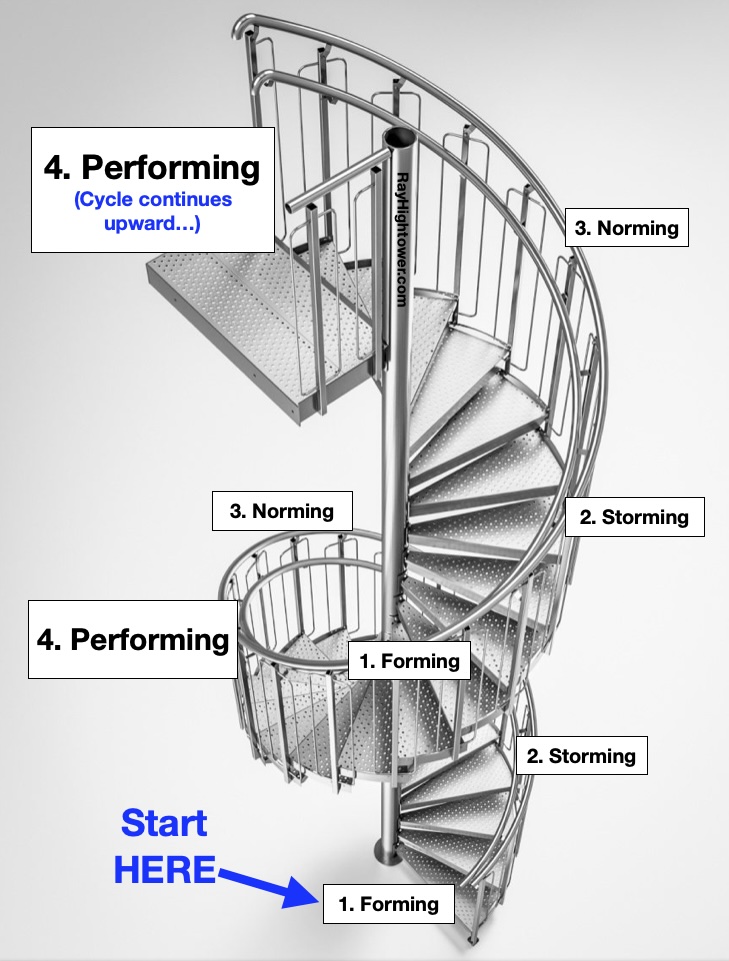Forming, Storming, Norming, Performing
08 Nov 2023
A few decades ago, I was introduced to a framework that describes the growth and hiccups of teams. Every team goes through these four stages:
-
Forming. Earliest days for the new team.
-
Storming. First disagreement within the team.
-
Norming. Regrouping after the disagreement.
-
Performing. The team enjoys its first collective success.
Why?
Why will a team go through these stages? Because teams consist of humans. Let’s explore this model further.
Forming
Right after the team launches, everyone is excited and happy to work together.
You have experienced this euphoria before. You’ve joined a new team. The people are new, the computers are new, everything is new. We humans are mesmerized by things that are new.
But newness wears off. And the frankness of reality remains.
Storming
As the euphoria of Forming wears off, team members go through their first disagreement. Some members ask themselves “Why did I ever join these people?” and they quit the team. Others stick with the team, but their performance suffers because they’re disgruntled.
Many teams die during the Storming stage. To make it to the next stage, the team must have a strong reason for being together in the first place.
Norming
The team reaches Norming after they work through the disagreement of the previous stage. They decide that they want to work together after all.
How does a team make it to Norming?
To achieve Norming, the team needs a noble cause to rally around, or a formidable enemy to target. NASA had the moon mission as a noble cause during the 1960s. Noble causes can be better for team culture because of the good vibes that come along with the cause.
Performing
Performing is the dream stage for most teams. A team that consistently delivers great results is performing. A team that receives referrals from their best clients is performing.
You will recognize the performing stage because team members have honestly assessed individual strengths and weaknesses and they know how each member fits within the greater & more powerful whole.
Repeating Cycle
The cycle repeats when the team faces a new challenge. If the team has made it through all four stages at least once, they’re better equipped to deal with Forming, Storming, Norming, and Performing in future cycles.
The cycles are like a spiral staircase. The stages repeat, with each stage at a higher level than last time.
Conclusion
So, what is the point of this article?
- Teams go through these stages because teams are made of humans.
- Teams will go through the four stages as they strive to produce results.
- The stages cannot be avoided, they must be gone through.
- The reward for making it through each stage is large. The reward for making it through all four stages is enormous.
Much success to you and your teams!



